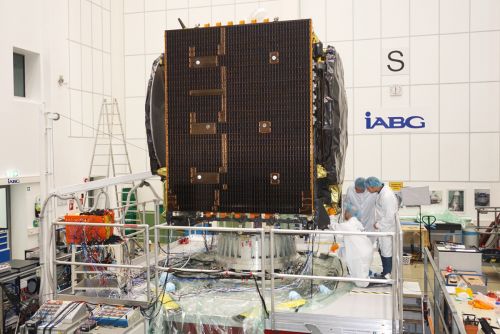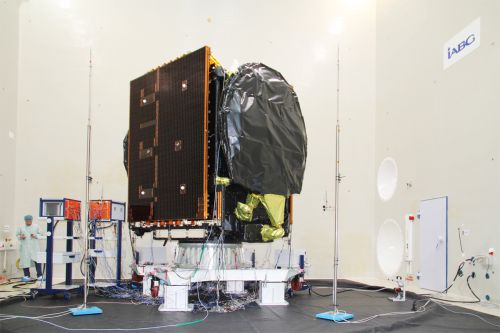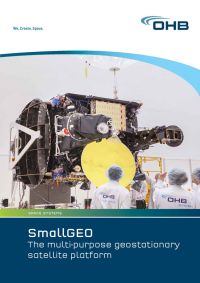EDRS-C

The development and realization of a European Data Relay System (EDRS) by the European Space Agency (ESA) in the frame of the ARTES 7 program, will settle a new standard for space based communication services. A constellation of geostationary satellites will receive the data of Low Earth Orbit (LEO) satellites and transfer the data to the ground. The geostationary position of the relay satellites fixed over Europe will provide the following advantages to future earth observation applications:
- Higher data-rates;
- Longer contact times for data dump
- Real time access to data
- Data security due to encrypted data down link;
OHB System will be building the dedicated EDRS-C satellite on the basis of the SmallGeo platform, which is currently being developed under ESA’s ARTES 11 program. Hence EDRS-C is already OHBs second telecommunication application on this platform. Based on Small GEO platform there will be a considerable number of design improvements implemented for EDRS-C, which will strengthen the future competitiveness for geostationary satellites:

- Optimization of the chemical propulsion design for Geostationary Transfer Orbit (GTO) injection.
- Adaptation of the payload capacities for medium sized missions of 300 kg payload mass and 2,8 kW payload power.
- Enlargement of the modular telemetry product-line to S- and Ka-Band, as well as implementation of secure encryption electronics.
- Specific Equipment design modifications to improve cost of power- and data electronics.
- Implementation of an optical payload
The dedicated EDRS-C Satellite will embark a Data Relay Payload including a Laser Communication Terminal (LCT) for the inter satellite link and a Ka-Band antenna for the data transfer link to the ground stations in Europe. Every second the data of up to 1800 Megabit can be transferred over a distance of 45.000 km in the speed of light.
Furthermore, a Hosted Payload (HP) from the commercial operator Avanti Communications named “HYLAS-3” will be embarked on the satellite.
The decision to go ahead with EDRS under German lead management was made at the ESA council of ministers conference in Den Haag in 2008. It is now being implemented under the industrial leadership of Astrium in Germany with the support of the German Federal Ministry of Economics and Technology (BMWi) and the German Aerospace Center (DLR).
Status
The contract between OHB System AG and Airbus Defence & Space for Phase C/D/E has been signed in May 2013. OHB System AG is prime contractor for the entire satellite. The data relais payload including LCT is being supplied by Tesat-Spacecom.
Partners
Airbus Defence & Space (customer), Tesat-Spacecom, LuxSpace, OHB Sweden, Avio, DLR GSOC
Download Brochure
Press release
About EDRS-C
Based on the SmallGEO platform developed by OHB as part of ESA’s Advanced Research in Telecommunications Systems (ARTES) program, the EDRS-C telecommunications satellite is expected to be launched in the second quarter of 2019. There, it will join the first satellite EDRS-A at an altitude of 36,000 kilometers. The relay satellite’s geostationary position will offer advantages for future Earth observation missions as it will be possible for the data to be accessed in close to real time. This is why it is frequently referred to as the SpaceDataHighway. A further advantage is the encrypted data downlink to the Earth.
The SmallGEO satellite platform has been modified to meet the specific requirements of this mission: design adjustments have been made to accommodate the special requirements of the optical payload, while the modular telemetrics payload has been widened to include the S and Ka band. In addition, secure encryption electronics have been installed.
The dedicated EDRS-C satellite is fitted with a data relay payload with a laser communications terminal (LCT) for satellite-to-satellite links. Both have been supplied by Tesat-Spacecom. The Ka band antenna will ensure data links with ground stations in Europe at transmission speeds of up to 1.8 Gbps. Also on board the satellite is a hosted payload known as “HYLAS-3” provided by Avanti Communications. OHB System AG has developed and built the satellite in a contract for Airbus.
Information on the European Data Relay System can be found on the ESA website.


